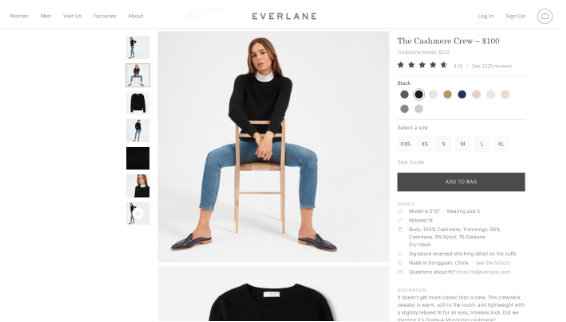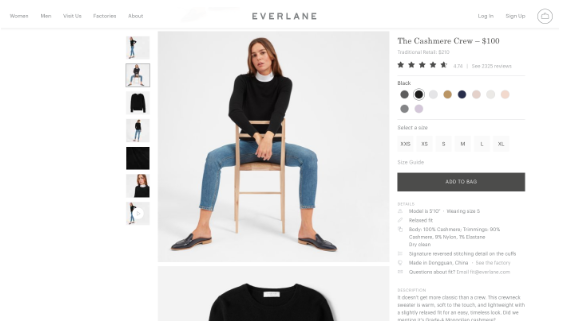How Traditional Brands Keep Up With Digitally Native Vertical Brands

Historically, brands that dominated supply chains dominated market share in their category. Think of Kellogg’s, Unilever, P&G -- these are the brands who owned their categories for the greater part of the 20th century. But digital ushered in direct-to-consumer brands called Digitally Native Vertical Brands (DNVB). DNVBs are making a huge impact on what consumers expect from brands and an even bigger impact on the economy -- contributing to 6.0% of 2016 GDP and saw 20% growth since 2008 according a study from Harvard Business School.
So what can traditional brands and other upstarts do to keep pace and compete with DNVBs? Because these companies control their entire brand experience: from sourcing and manufacturing (hence, vertical) to delivering product experiences online (D2C site and social presence), they have a unique advantage that allows them to connect in an authentic way with their customers via micro-targeting. Here are four things that any brand regardless of size should consider to compete today:
Adopt a data-driven model. High performing DNVBs like Warby Parker measure everything and are obsessed with data. They are tracking customer acquisition cost, they leverage first, second, and third party behavioral, demographic and psychographic to have laser-focused digital advertising. They understand what messaging resonates for different segments of their target demographic; they do not have a one message fits all marketing mantra. Each touch point with a customer is designed to delight, convince and convert. Emerging DNVBs know what other existing brands intersect their demographic and strategically target potential customers.

Use that data strategically. One of the biggest hurdles traditional brands face is actionable consumer data. When your product has been granted prime shelf space and large nationwide ad campaigns for decades, it is hard to compete with DTC engines that are born from the internet, and take leveraging that data to drive sales as a critical to their success. Start with segmenting out target demographics and testing out messaging and content to see what resonates best. Being in touch with data and aware of who your customer is online will help traditional brands make an impact online.

Invest in strong product experiences. DNVBs rely on best-on-the-internet product experiences to drive sales. If you’ve never heard of a product, or seen it in person, it is difficult for a consumer to imagine that product in their life. DNVBs create product experiences that are visual (product, lifestyle, image), descriptive (no attribute is left undescribed, or without an image), and transparent. Consider Everlane as an example, Everlane’s customer base is obsessed with the quality of product, the sourcing of their clothing, and the experience of shopping online. The details of this page are so minute they tell you the size of they model is wearing and how tall she is. DNVBs make it as easy as possible to understand their products and visualize them as part of their everyday life. Traditional brands should be heavily focused on creating strong product experiences across top sales channels to drive revenue.
Stay connected to your customer. DNVBs excel at customer service and the ability to connect directly with their customers. From extended phone hours, to open direct messages on Facebook, Instagram, to quick response chat bots and email inquiries, DNVBs are obsessed with maintaining a strong relationship with their customer and keeping them happy. According to a JD Power Associates report, 66% of expect direct brand connectivity and 67% used a company’s social media sites for servicing. The digital age allows brands to have a direct relationship with the consumer for the first time. Traditional brands need to consider how opening communication to customer interaction can strengthen loyalty and keep them top of mind for customers for years to come.
As more DNVBs seem to sprout up daily, and expand their presence beyond digital channels to brick & mortar stores, it’s important for non-digitally native brands to look to them as examples to emulate and consider what makes them so successful: they create products with the customer in mind, rather than trying to make the product fit the customer. Consumers are increasingly demanding informative and easy to understand product experiences across every sales channel they interact with, and brands who aim to meet those expectations and deliver on it will be the most successful on the digital shelf.
Written by: Caroline Egan
Caroline Egan is the Content Marketing Manager at Salsify. When she's not writing about how to win the digital shelf, she can be found waking up early to hit a work out class or cooking up a storm.
Recent Posts
Omnichannel Strategy: Here Are the Top 3 Drivers of Omnichannel Profitability
Digital-Influenced Retail Will Describe 70% of U.S. Sales by 2027 — What Does This Mean for Brands?
How Frequently Do Retailer Requirements Change — and How Can Brands Keep Up?
Subscribe to the Below the Fold Newsletter
Standing out on the digital shelf starts with access to the latest industry content. Subscribe to Below the Fold, our monthly content newsletter, and join other commerce leaders.


